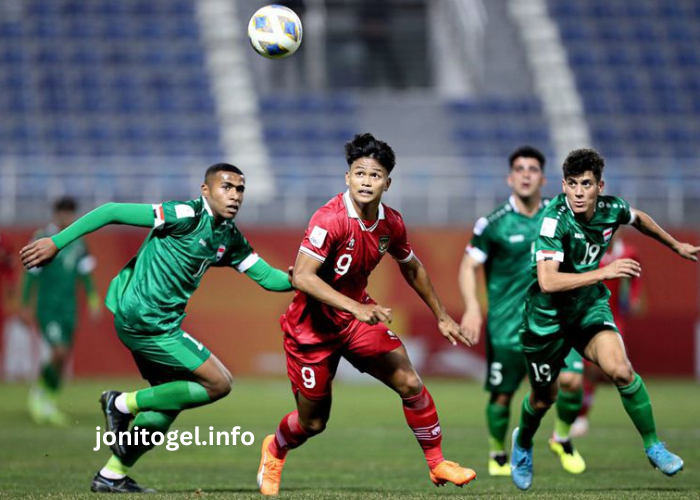The match-up between the national football teams of Iraq and Indonesia has always been a captivating affair. This fixture brings together two teams with rich footballing histories and passionate fanbases. This article delves into the statistical comparison of the Iraqi national football team and the Indonesian national football team, analyzing their head-to-head records, individual player performances, tactical strategies, and much more.
Historical Background of Iraqi Football
Iraqi football has a storied history dating back to the 1940s. The Iraqi national team, also known as the Lions of Mesopotamia, has achieved significant success in Asian football. They have won the AFC Asian Cup once, in 2007, and have consistently been strong contenders in regional tournaments. The team’s history is marked by resilience and moments of brilliance, reflecting the nation’s enduring passion for the sport.
Historical Background of Indonesian Football
Indonesian football, with roots stretching back to the early 20th century, has developed its own vibrant history. The Indonesian national team, known as Garuda, has had its share of ups and downs. While they have not yet clinched major international titles, they have shown promise in various regional competitions, particularly in the AFF Championship. The passion of Indonesian fans is a driving force behind the team’s spirit and determination.
Head-to-Head Record
The head-to-head record between Iraq and Indonesia is an important aspect of their footballing rivalry. Historically, Iraq has had the upper hand in these encounters, often showcasing superior tactical discipline and technical skills. However, Indonesia has occasionally surprised with spirited performances. Analyzing past matches provides insights into patterns and strategies that could influence future games.
Notable Matches
Several matches between Iraq and Indonesia stand out for their intensity and significance. One memorable encounter was during the 2007 AFC Asian Cup qualifiers, where Iraq secured a decisive victory. Another notable match occurred in the 2014 FIFA World Cup qualifiers, which saw Iraq winning both home and away fixtures against Indonesia. These games are remembered for their competitive nature and tactical battles.
Tactical Analysis: Iraq
Iraq’s tactical approach is characterized by a solid defensive setup and swift counter-attacks. The team often employs a 4-2-3-1 formation, providing a balance between defense and attack. Key players in the midfield control the tempo of the game, while quick wingers and a central forward pose constant threats to the opposition. Understanding Iraq’s tactical strategies offers a glimpse into their game plan and execution.
Tactical Analysis: Indonesia
Indonesia, known for its attacking flair, often utilizes a 4-3-3 or 4-4-2 formation. The team focuses on quick transitions and exploiting spaces on the flanks. Indonesian players are known for their agility and speed, making them effective in counter-attacking scenarios. Defensive stability remains a challenge, but the team’s attacking prowess can pose significant threats to any opponent.
Key Players: Iraq
Iraq boasts several key players who have made significant impacts on the international stage. Notable among them is Younis Mahmoud, a legendary striker known for his goal-scoring abilities. Midfielders like Ali Adnan and defensive stalwarts such as Salam Shaker have also played crucial roles in the team’s success. These players bring experience and skill, making them pivotal to Iraq’s performance.
Key Players: Indonesia
Indonesia’s squad features talented players who have gained recognition both domestically and internationally. Evan Dimas, a creative midfielder, is known for his vision and playmaking abilities. Strikers like Boaz Solossa have been consistent goal-scorers, while defenders such as Hansamu Yama ensure stability at the back. These players are essential to Indonesia’s aspirations on the international stage.
Recent Form and Performance: Iraq
In recent years, Iraq has shown commendable performances in various competitions. Their consistent showing in the AFC Asian Cup and World Cup qualifiers highlights their competitive edge. The team’s ability to perform under pressure and secure crucial victories has been a testament to their growth and development. Monitoring their recent form provides insights into their current standing and future prospects.
Recent Form and Performance: Indonesia
Indonesia has had a mixed bag of results in recent tournaments. While they have faced challenges in securing victories against top-tier teams, their performances in regional competitions like the AFF Championship have been encouraging. The team’s resilience and ability to bounce back from setbacks are noteworthy. Analyzing their recent form helps in understanding their progress and areas needing improvement.
Fan Support and Atmosphere
Both Iraq and Indonesia enjoy immense support from their passionate fanbases. Iraqi fans, known for their fervent support, create an intimidating atmosphere during home games. Indonesian fans, similarly, are known for their enthusiastic and colorful support, often filling stadiums to capacity. The electric atmosphere generated by these fans plays a crucial role in motivating the players and influencing match outcomes.
Development Programs and Youth Academies
The future of any national team depends on its development programs and youth academies. Iraq has invested in nurturing young talent through various football academies and development programs. Similarly, Indonesia has focused on grassroots development, with initiatives aimed at identifying and nurturing young footballers. These programs are essential for building a strong foundation and ensuring a steady supply of talented players for the national team.
Challenges and Opportunities
Both Iraq and Indonesia face unique challenges in their footballing journeys. Political instability and limited resources have often hindered Iraq’s progress. However, the resilience and talent of their players have helped them overcome many obstacles. Indonesia, on the other hand, faces challenges related to infrastructure and consistent performance. However, the growing popularity of football and increasing investments offer significant opportunities for growth and development.
The Future Outlook
Looking ahead, both Iraq and Indonesia have promising futures. Iraq aims to build on its recent successes and secure a place in future World Cup tournaments. With a blend of experienced players and emerging talents, the team is well-positioned for continued success. Indonesia, with its focus on youth development and improving infrastructure, is poised to rise in the regional and international football scene. The dedication and passion of both teams’ players and fans will be crucial in shaping their futures.
Conclusion
The rivalry between the Iraqi and Indonesian national football teams is a testament to the passion and competitive spirit inherent in football. Through a detailed statistical analysis, we have explored the historical backgrounds, tactical strategies, key players, and future prospects of both teams. While challenges remain, the opportunities for growth and success are immense. As these teams continue to develop and compete, their encounters will undoubtedly remain a highlight for football fans worldwide.






